 This might be the most recognized moth larvae in North America. Almost everyone recognizes the fuzzy, black-at-both-ends caterpillar that you find on the ground in the fall. It eventually turns into the golden yellow Isabella Tiger Moth. Here are some interesting Banded Wooly Bear (Pyrrharctia isabella) facts: - Sedro-Woolley, a town in Washington State is said to be named after the caterpillar. However since the Phillip A. Wolley, a railroad developer moved the Sedro in 1899 and was a major land developer in the area, that story seems unlikely. -Arctic populations of Wooly Bears can take several years (up to 14!) to grow into moths, and they pass the winters frozen solid. -Folklore has it you can predict the severity of the winter by looking at the bands, the wider the copper band, the milder the winter. In actual fact, there is considerable variation in band width within a group of silbling hatched from the same egg case. -the hairs of Wooly Bear can cause dermatis in some people. -at least 8 towns in eastern North America have Wooly Bear festivals in the fall.
1 Comment
I figured after writing out that English name that no further text would be required! It is descriptive. The long neck enables this beetle to reach inside of the shell of a snail and chew away. They also are quite keen on slugs and I have seen them scurrying along the path with a small slug clutched firmly. They will also take out worms and spiders.
Like many of the ground beetles, Scaphinotus angusticollis is flightless, their wings shortened to uselessness. Although mainly nocturnal, a few do venture out in the daytime from their cover places under rotting logs, leaf litter or moss. There was a PhD these done out of UBC by Suzy Lavallee that studied S. augusticollis's response in body condition and movements to forest harvesting. The differences in responses were correlated to the snails found and down woody debris that could be used for cover in the clear-cut or forested areas. I think that is very cool that ecological studies studying predator/prey complexes in varying ecosystems can be done at this scale.  This was a species that I was keen to find. It was fitting that this one was caught at the pond by Syd Cannings one hot, sunny afternoon in August. Syd has been a dragonfly collecting partner for many years and taught me a lot of what I know about them. Thanks Syd! We haven't found exuvia or larva of this species or seen mating so we aren't sure yet whether it is breeding in the pond or passing through. Pachydiplax longipennis are generally found in larger ponds or lakes and are very common in southern North America. In B.C. they are in the southwest corner and the infrequently in the Okanagan.  Turkey Vultures (Cathartes aura) are a common sight here during the summer and fall months. Almost always seen flying over Leaning Oaks with wings outstretched and tipped upwards, they have a distinctive rocking back and forth as they fly. They are most noticeable on nice days when they stay aloft on thermal uprisings. They also seem to appreciate the assist of a good wind storm as well, and we see Turkey Vultures using high winds to keep themselves aloft with little or no apparent effort on their part. Here we have Turkey Vulture records from the third week of February to the middle of November. They are clearly increasing in numbers as well as how long they stay, with small numbers being found year round on southern Vancouver Island now. It is suspected they have been assisted with a contant supply of road-killed animals on ever busier road and milder winters..  Amongst local birders there is a running joke that if you hear a bird noise that you don't know - it is a Bewick's Wren (Thryomanes bewickii). Males have multiple songs that they can sing (from half a dozen to almost 2 dozen depending on the male), and there is considerable local geographical variation on top of that. Throw in a few chucks, whistles, burrs and trills and you get a lot of variety. Click here to listen to Bewick's Wren vocalizations from througout their range. They often nesting in human made things like mailboxes, shoes, hats, nest boxes and other cavities. Loud and visible, Bewick's Wrens are often hard to ignore neighbours. They are present at Leaning Oaks from time to time and have raised families here, but we also have had them disappear for months at a time some years, particularly after period of cold weather. Of our 3 wrens it is the longest tailed and has a distinctive white eyebrow stripe. I was quite keen on the jaunty art nouveau pattern, found on the orb weaver Metellina segmentata.
The web that this spider spins has no threads at its centre. This is common for the tetragnathid spiders. M. segmentata was introduced to the Vancouver area from Europe and is now one of the more common orb weavers in the Vancouver and Seattle areas. It generally builds it's web low and near the ground. Thanks to the person who provided the correct identification of this species -much appreciated! 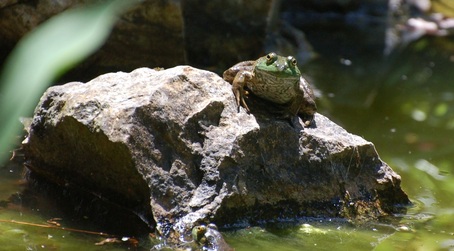 We built a small pond in garden here a number of years ago, and, for the most part it has been an amazing attractant for all manner of critters. We have had River Otters and Mink, Mallards and Kingfishers, at least 8 species of dragonfly, and many other water dependent invertebrates. One of the first vertebrates to find the pond however was this species, Lithobates catesbeianus a very large non-native frog that colonized our new pond the very first rainy night in August. So far despite the size of some of the frogs in the pond we have not had any evidence of breeding. No egg masses, no tadpoles. This is because our pond builds up Bullfrogs in large numbers from immigration, and then becomes a mecca for predators. The first mass control of Bullfrogs took place on two consecutive nights when a mother and four or five River Otter kits visited. They took the frogs down to a small number and the remainder became food for another weasel family representative, a Mink. Then another late summer rain and the pond became colonized by bullfrogs again. This year a young Great Blue Heron has been visiting the pond and targeting the bullfrogs. Our pond is a sink, it doesn't add to the population of Bullfrogs. Its not all rosy though, we suspect the high number of Bullfrogs is the reason why we have not recorded Red-legged Frog on the property. Tree Frogs apparently don't breed in our pond either and we have only ever seen a single salamander larvae. When the numbers of frogs are high, we suspect the numbers of damselflies is lower. We have watched Bullfrogs try to take birds - up to the size of an American Robin!  American Robins (Turdus migratorius) are found year round at Leaning Oaks and we have records for every week of the year. In the fall and winter, they are found in gangs, as they forage widely for berries. In late September they flock to the black berries of Phytolacca clavigera in the garden, in October the big draw are the ripening berries of the Arbutus Trees (species #30). They are one of the earliest songbirds to start singing here both in terms of the time of year, as well as being one of the earliest in the morning. Thrushes, as a general rule are active earlier and later in the day than many songbirds. Males are more brightly patterned than females. The male on the right here is sunning himself on a warm evening in the summer. The female (below) is slightly less colourful, but easily recognized as an American Robin. 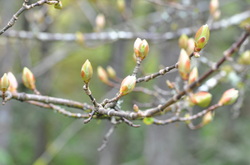 The Bigleaf Maple is the largest maple in Canada, reaching up to 36 meters in height. The leaves are huge to match, the deeply lobed leaves can be up to 30 cm across and are also the largest in Canada. Possibly the most dangerous as well -last night as I was driving home, one of these behemoths fell and splayed itself across my wind shield. I could see nothing. There are a few very large Acer macrophyllum on Leaning Oaks, putting their roots down in the moister areas.  The buds start showing in April, followed by the honey sweet smell of the flowers. These flowers are edible and we'll often put a few in a salad. The other very yummy part is the sap; maple syrup from Bigleaf maples is very different than what comes from the eastern sugar maples. It is much richer and amazingly variable from tree to tree. The jars of syrup below; were all produced by Connie and Ralph Johnson in one year from the Cowichan Valley. The flavour will vary as much as the colour. Ralph is shown working at tapping a Bigleaf maple. The sugar content of the sap is much lower, so the amount of sap required to get a good syrup is greater. The tapping is usually done in January. Maple syrup photos by Connie Johnson. 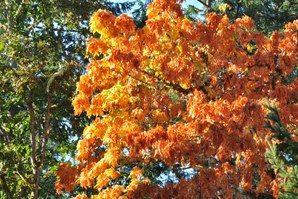 The strong close grained wood was used for paddles and dishes by local First Nations. The inner bark was used for rope and baskets. The bright yellows and oranges in the fall gives what is generally a subtler show of colour here on the coast a bit off oomph.  To generalize, geese and swans are on the increase North America wide and this species is no exception. Cackling Goose (Branta hutchinsii ) is recently split from their similar looking, but much larger relatives, the Canada Goose. They are small geese roughly the size of a mallard, with proportionately short necks, stubby bills and high pitched voices. For us they are mostly a bird of fall and winter. Flocks of Cackling Geese are appearing on southern Vancouver Island in larger and larger numbers, and their high pitched cackling is beginning to be a common sound as they fly over Leaning Oaks. It is fall. There is no doubt. How do I know? Because the guests leave the downstairs bathroom in one of four ways: 1) come running up for a huge jar and paper to save an amazing creature, 2) come out after there is a great deal of swooshing, flapping, slapping and flushing and then casually ask a while later...uhm, do you guys normally get such HUGE spiders? 3) come running up to use an upstairs facility because there is no freaking way they are going into the downstairs room, ever, 4) run screaming from the house, tossing their bags in front of them and all we see is the red tail lights tearing down the driveway.
It is fall and Eratigena atrica is looking to mate. They are not coming to get out of the cold, they are just on the move searching for another. That they are in your sink or shower just means that they ended up there while trying to get a drink and can't get out. Their webs are flat, a bit messy and have a funnel at one end. They were introduced (accidentally I am sure) to North America from north western Europe in the early 1900's. Claudia Copley, a local spider expert demonstrates aptly in this video how there is nothing to fear from these guys; "they are our allies". There are similar spiders that are moving about this time of year, including the hobo spider. The Garry Oak Ecosystem Restoration team had this great information sheet done up to tell the difference. The scientific name has changed since this was produced and what is Tegenaria duellica in there is this species. From what I could tell, there have been a number of taxonomic revisions. 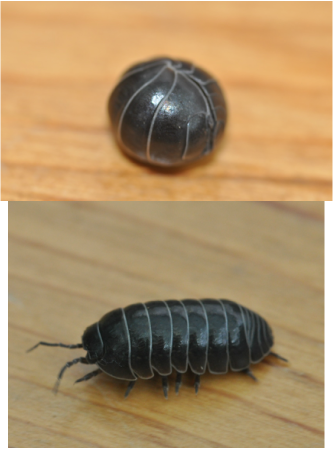 The many names by which the flat, armoured crustaceans that feed on detritus and live under pots, moist logs and leaf litter go by -and are seemingly interchangeable make me want to swear off English names forever! This is Armadillidium vulgare, and the most descriptive English name is the pillbug (or roley poley!) and you can see that when it goes into defensive mode at the sound of a spider's footsteps, it could be mistaken for a pill. In the dark. After a bender. The woodlouse (#195) can not get into this tight ball (called conglobulation). Conglobulating is not only an excellent defensive mechanism, but also conserves moisture. This is very important when your respiratory organs or pleopods are on your ventral surface. One study (in Smigal and Gibbs 2008) found that pillbugs would spontaneously conglobate at temperatures above 40 deg. C. or when in very dry soil (< 10% moisture). The females carry their eggs in a "marsupium" and even after they hatch, the young are carried until they are able to go into the world on their own. A. vulgare was introduced from Europe to North America. Smigel JT, Gibbs AG. 2008. Conglobation in the pill bug, Armadillidium vulgare, as a water conservation mechanism. 9pp. Journal of Insect Science 8:44, available online: insectscience.org/8.44 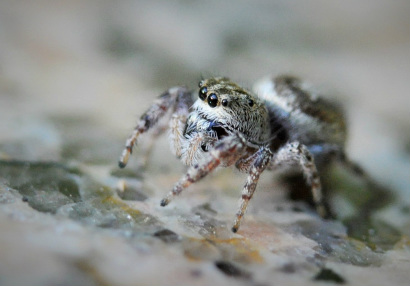 We think this jumping spider is Pelegrina aeneola, a widespread western North American species. I will admit that I couldn't find a common name for the species and just plain made this one up. Leah hates it when I make up common names*. Pelegrina refers to a famous pear-shaped pearl, discovered in the mid 1600's by an African slave in the Gulf of Panama that was "the size of a pigeon's egg". (As a reward his owner granted him his freedom). This pearl has an interesting history and was worn by the cross-dressing Rasputin to the opera, for example. The word aeneola means made from bronze - undoubtedly in reference to one of the common colour patterns found in the males of this species. This small jumping spider has most often been collected from conifer trees, although has also been found in a wide variety of other habitats. Despite the tiny size of this spider it has been recorded taking prey as large as the Common Earwig. These are photographs of a female that joined us for lunch on July 5, 2014. *She also doesn't like the term "common name" and prefers the term "English name" or "Hul'q'umi'num' name or Spanish name....or whatever. For the record. 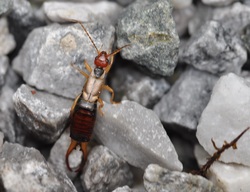 This year's long dry summer seems to have been favourable for Common Earwigs, they have caused more damage to the plants on the deck than any year I can remember. The Common Earwig (Forficula auricularia) is another introduced insect from Europe that can become a pest when their numbers are high. They are remarkably adaptable and eat fruit, foliage, insects, decaying organic matter and flowers. They can be major predators of aphids. This photo shows a male, with curved pincers at the rear to the insect. Females have straighter pincers. The origin of the name is not clear. Some say the name originated as an Old English phrase meaning "ear insect" or "ear creature," and there are old accounts of earwigs entering human ears to feed. This is dicredited by modern sources. Others conjecture it's a corruption of the phrase "ear wing," referring to the ear-like shape of the insect's hind set of wings. The pincers can be used to pinch though, although not hard enough to be a real menace. 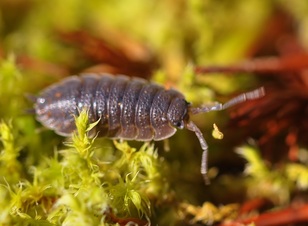 This crustacean lives under piece of wood, plant pots, beneath the moss and fallen vegetation. Wood lice (and the pillbugs or roley polies) breath through gills and live in moist areas but not in the water like the rest of their crustacean relatives. The rough texture of the plates seperate this "woodbug" from some of the others found on southern Vancouver Island. Porcellio scaber, like the other members of this group has blue blood as the result of a copper molecule in the oxygen transport molecule instead of a iron molecule like our blood. This is another common species found around houses and gardens that has been introduced from Europe. They feed on dead plant material and are generally not a pest unless they reach huge numbers. The woodlice are not able to roll into as tight a ball (or conglobulate, my new word of the day) as the "pillbugs" do (see #198).  Earthballs (Scleroderma cepa) are a tough skinned, puffball-like fungus that is found in cultivated areas and paths at Leaning Oaks. They appear in late summer (in areas where we irrigate) or after the rains come in the fall in other parts of the garden. If you split them the interior is an amazing deep purple colour. Eventually they crack and split and produce large quantities of dark brown spores. Sometimes when these split they do so in a way that makes them look a messy version of an earthstar. Poisonous, but a useful ectomycorrhizal fungus used as a soil inoculant in agriculture and horticulture.  This large, long, thin black, tan and yellow wasp is a parasitoid of moth and butterfly caterpillars. This female was cruising low over grassy areas presumably looking for caterpillars when she was photographed. Wasps in the genus Therion are part of the huge and complex group of wasps known as Ichneumon wasps, all of which are parsitoids. |
AuthorsTwo biologists on a beautiful property armed with cameras, smart phones and a marginal knowledge of websites took up the challenge of documenting one species a day on that property. Join along! Posts and photographs by Leah Ramsay and David Fraser (unless otherwise stated); started January 1, 2014. Categories
All
Archives
May 2025
|

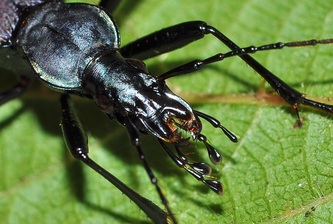

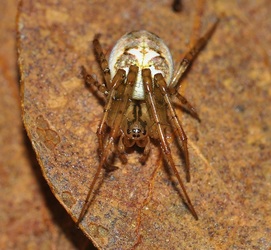
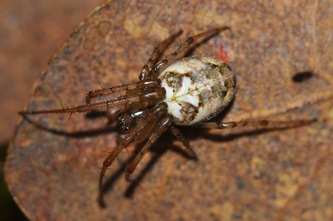
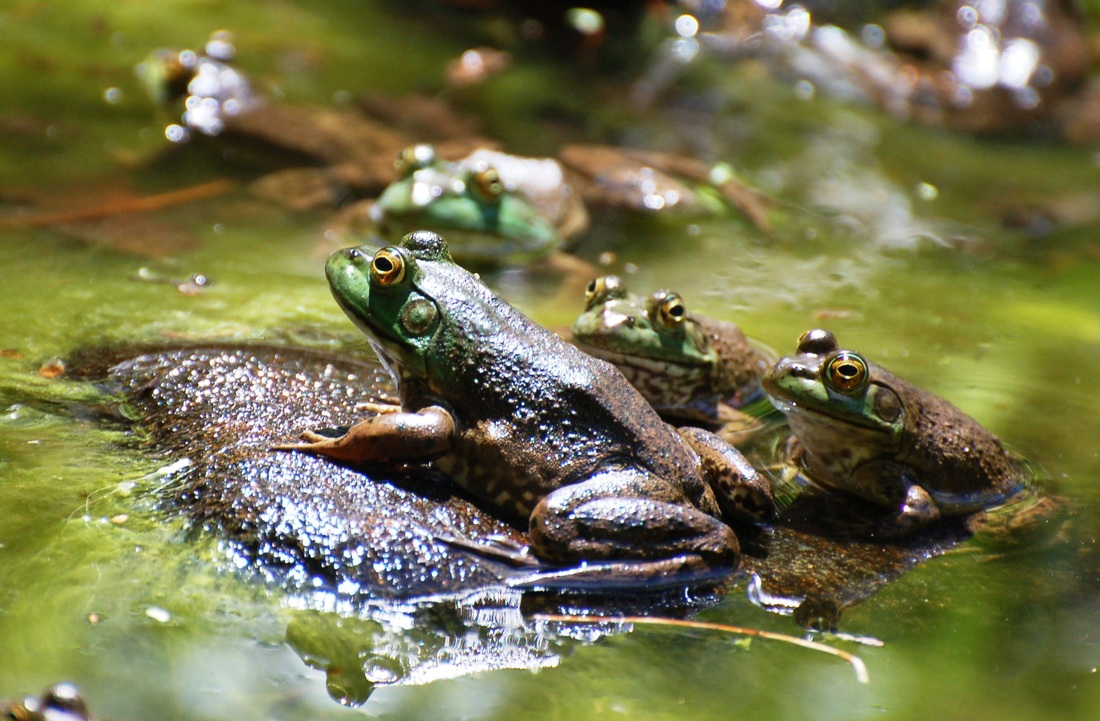
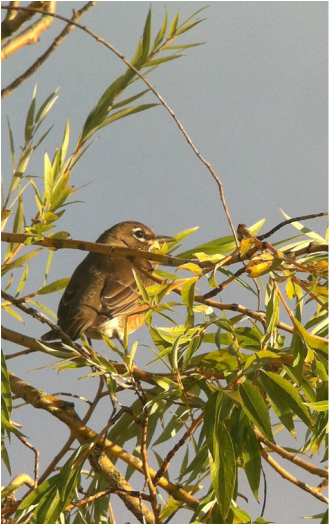
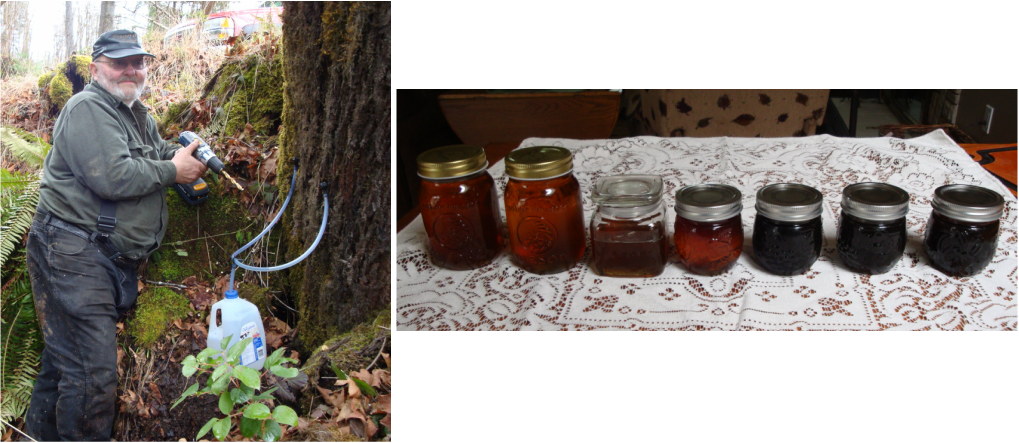
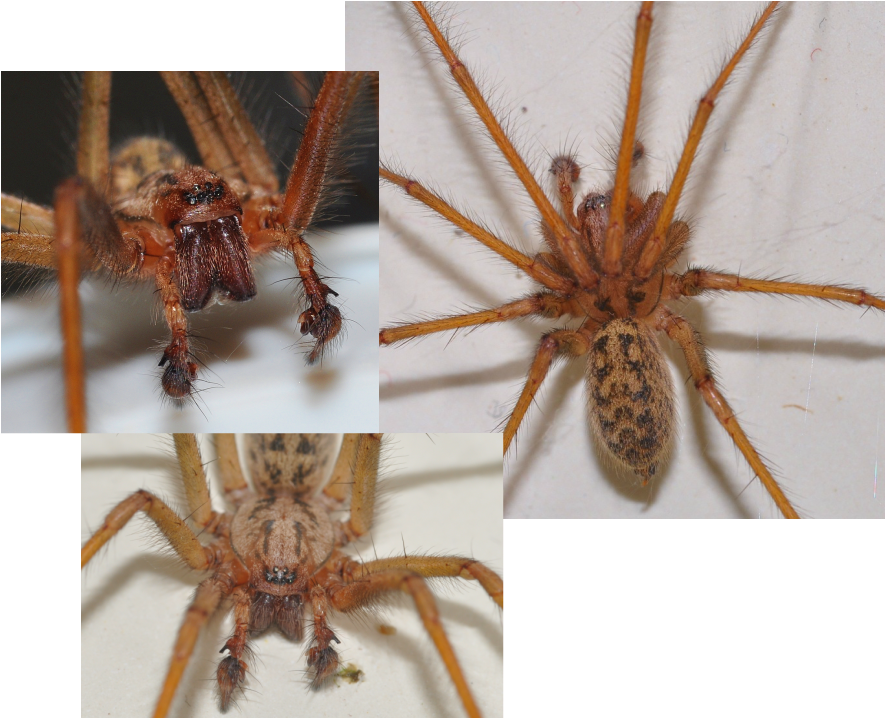
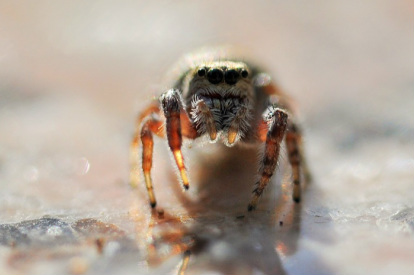
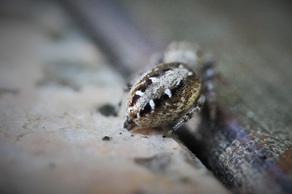

 RSS Feed
RSS Feed